2.2.4 GESI Responsive Programming
Gender and Social Inclusion should be mainstreamed across the entire TVET/HE system and process. Different tools can be developed to guide TVET/HE to mainstream Gender and Social Inclusion. In this module, we adopt the ILO Guide on making TVET and skills development inclusive for all. The guide proposes 9 steps which include:
- Governance and Strategy Development: strategy and planning include goals related to gender and social inclusion.
- Access: information available about TVET/HE courses is inaccessible, e.g. disability-related accessibility, limited market outreach that doesn’t target women, young persons, or persons with disabilities. Mobility restrictions based on social norms or accessibility constraints make it difficult to reach TVET/HE centres.
- Skills Need Identification: skills need identification includes the provision of reasonable accommodation for participants with disabilities.
- Standards, Qualifications and Curriculum: do entry requirements present barriers based on identity? Inaccessible recruitment processes, family/community are not supportive based on the distance to/from TVET/HE centre, topic of course, prohibitive costs, unrealistic entry requirements for persons historically excluded from the education system, etc.
- Skill Building, Delivery, Classroom Based and On the Job: is classroom pedagogy inclusive and transformative? Are on-the-job trainers sensitised on gender and social inclusion, e.g. disability-related accessibility?
- Skill Assessment and Certification: is testing culturally responsive? Are questions rooted in gender, disability or age stereotypes or specific language?
- Development of TVET/HE professionals: are TVET/HE professionals trained in GESI responsive or transformative pedagogy? Are they equipped with the right knowledge needed to facilitate an inclusive classroom that respects persons of all identities? Do they understand how to change the way they are teaching to be inclusive, including providing reasonable accommodation and accessibility support to persons with disabilities?
- Post-training support: career services (if they exist) do not consider diversity, equity and inclusion and/or gender and social inclusion when considering support needed by graduates and/or building talent pipelines to employers.
- Monitoring and Evaluation: data collected on the performance of TVET/HE institute isn’t disaggregated by age, disability, or gender. Institute improvement plans do not consider these factors.
Mainstreaming should occur across the entire TVET/HE system. The steps are complemented by structural aspects like training location/infrastructure.
The figure below summarises the steps for GESI mainstreaming in TVET/HE institutions.

GESI mainstreaming (Adopted from ILO: “Guide on making TVET and skills development inclusive for all”)

| Previous | Next |






